Precision Hardware Customized Solutions Manufacturer
Contents
Sheet metal processing encompasses a range of manufacturing operations—cutting, bending, forming, joining, and finishing—that convert raw sheets into final parts. Before assembling or integrating metal parts into products, multiple sheet metal processing steps ensure the material meets dimensional, mechanical, and aesthetic requirements.
Definition: Sheet metal processing refers to all procedures applied to flat metal sheets (e.g., steel, aluminum, stainless steel, copper) to shape, cut, join, and finish them into components.
Importance: Proper sheet metal processing affects product performance, durability, appearance, and production efficiency.
Versatility: From decorative panels to heavy-duty structural elements, sheet metal processing serves industries like automotive, aerospace, construction, electronics, medical, and energy.
Workflow Context: Manufacturers often combine multiple sheet metal processing methods (e.g., cutting + bending + welding + finishing) to achieve the required design and functionality.
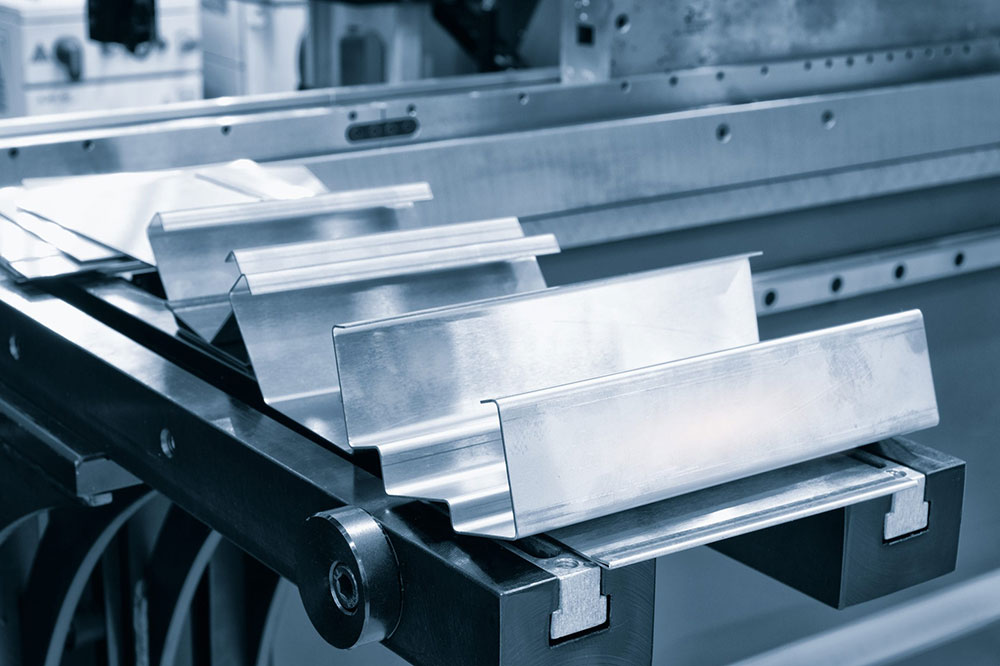
Cutting is the first step in most sheet metal fabrication workflows. It separates raw sheets into blanks or shapes for further operations.
Laser Cutting in Sheet Metal Processing
High precision and narrow kerf enable intricate geometries.
Suitable for stainless steel, carbon steel, aluminum, copper, and more.
Automated CNC control ensures repeatability and tight tolerances.
Minimal heat-affected zone when using high-power fiber lasers, reducing warping.
Applications: electronic enclosures, decorative panels, medical device housings.
Plasma Cutting in Sheet Metal Processing
Uses an ionized gas stream to cut conductive metals, ideal for thicker gauges.
Faster cutting speed on heavy steel, though edge finish may require post-processing.
Common for industrial frames, structural plates, and heavy equipment enclosures.
Waterjet Cutting in Sheet Metal Processing
Abrasive waterjet cuts without heat, preventing thermal distortion.
Can handle exotic alloys, composites, and heat-sensitive materials.
Often used for prototype parts with complex shapes or multi-material stacks.
Shearing and Sawing in Sheet Metal Processing
Mechanical shears for straight cuts on sheet and plate; cost-effective for simple profiles.
Circular or band saws for small runs or specific shapes.
Less precise than laser/plasma but efficient for basic cutting tasks.
Punching in Sheet Metal Processing
CNC punch presses create holes, louvers, and small features by stamping.
Fast for repetitive patterns; can be combined with tool turrets for flexibility.
Often used before or after cutting to prepare holes for assembly.
Choosing the appropriate cutting method in sheet metal fabrication depends on material thickness, geometry complexity, production volume, and tolerances.

Forming operations reshape flat blanks into angles, curves, or 3D contours. Effective design for forming in sheet metal processing reduces trial-and-error and minimizes springback issues.
Press Brake Bending in Sheet Metal Processing
CNC press brakes apply force via punch and die to create precise bends.
Key considerations: bend radii, material thickness, tooling selection, springback compensation.
Applications: enclosures, brackets, chassis parts, panels.
Roll Forming in Sheet Metal Processing
Continuous bending through a series of rollers creates long profiles (e.g., channels, rails).
Ideal for high-volume production of uniform cross-sections (roof panels, structural trims).
Requires initial tooling investment but offers low per-piece cost at scale.
Deep Drawing and Stretch Forming in Sheet Metal Processing
Deep drawing uses dies to stretch sheet into deep shapes (e.g., containers, housings).
Stretch forming bends and stretches sheet over a form block, used for large curved components (aerospace skins, architectural panels).
Requires careful die design and blank layout to avoid thinning, wrinkles, or tearing.
Incremental Sheet Forming in Sheet Metal Processing
CNC-controlled tool incrementally deforms sheet into desired shape without dedicated dies.
Suited for low-volume or prototyping where tooling costs must be minimized.
Allows flexibility but may have slower cycle times.
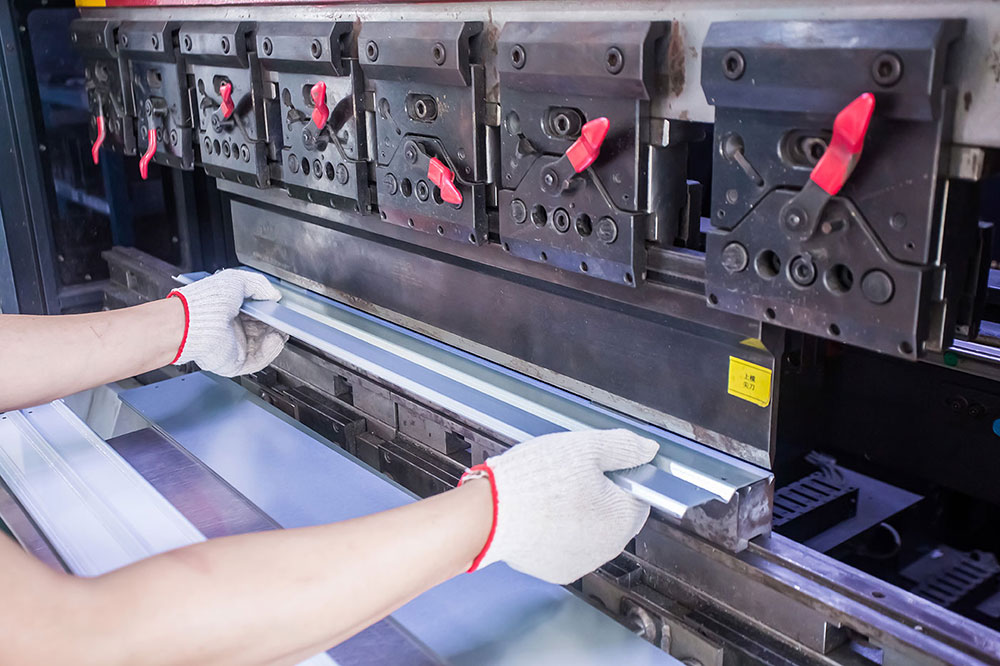
Joining techniques combine multiple sheet parts into assemblies. Each joining method presents trade-offs in strength, appearance, and process complexity within sheet metal processing.
Welding in Sheet Metal Processing
MIG Welding: Efficient for many ferrous and non-ferrous sheets; good penetration but may require skilled control on thin gauges to avoid burn-through.
TIG Welding: High-precision welds with clean appearance; ideal for stainless steel or aluminum, common in medical or aerospace components manufactured via sheet metal processing.
Spot Welding: Fast for overlapping sheet joints (e.g., automotive panels).
Laser Welding: Precise, low-distortion welds; used for critical assemblies requiring clean joints.
Proper fixture design and welding sequence reduce distortion, essential in high-precision sheet metal processing assembly.
Mechanical Fastening in Sheet Metal Processing
Rivets, bolts, screws, clinching: allow disassembly or joining of dissimilar materials without heat.
Clinching forms interlocking joints by localized plastic deformation, useful when welding is impractical.
Incorporate features (e.g., flanges, tabs, pilot holes) during design to streamline assembly.
Adhesive Bonding in Sheet Metal Processing
Structural adhesives join sheets without thermal input, maintaining material properties.
Useful for joining dissimilar metals or when aesthetics demand invisible seams.
Surface preparation and curing processes must be integrated into sheet metal processing workflows.
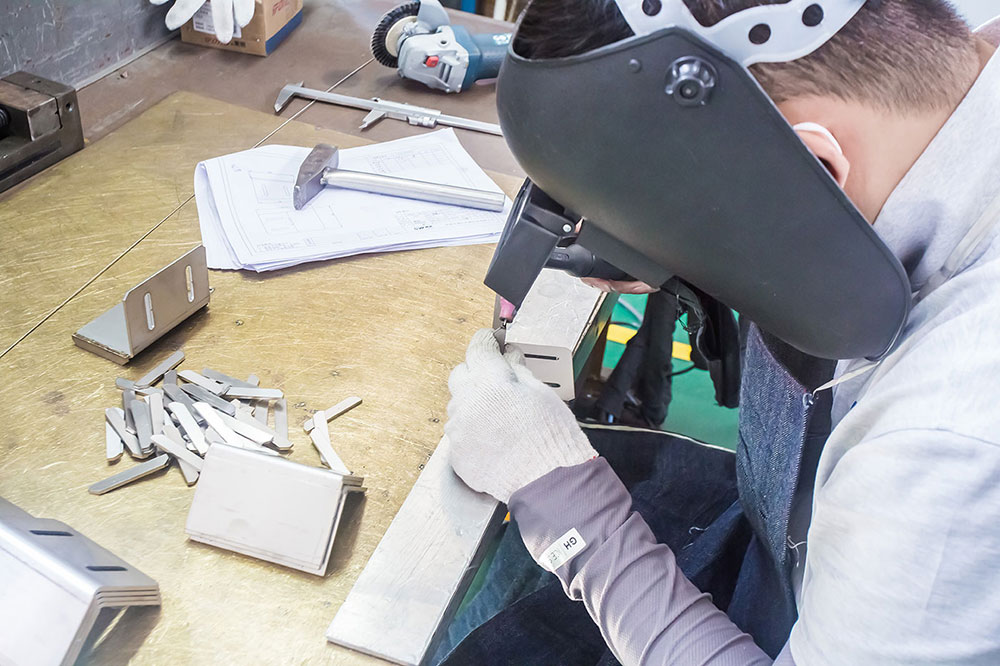
Selecting the appropriate joining method in sheet metal fabrication depends on joint strength requirements, material compatibility, environmental factors, and production volume.
After shaping and joining, sheet metal processing often includes finishing steps to enhance durability, appearance, or corrosion resistance.
Powder Coating in Sheet Metal Processing
Electrostatic application of dry powder and curing yields durable, uniform finish.
Resistant to impacts, chemicals, and UV; used for outdoor enclosures, architectural panels.
Pre-treatment (e.g., phosphate cleaning) ensures adhesion and longevity.
Anodizing in Sheet Metal Processing
Electrochemical treatment for aluminum parts, improving corrosion resistance and surface hardness.
Allows color dyeing for branding or functional coding.
Common in electronics housings, decorative trims.
Electroplating and Galvanizing in Sheet Metal Processing
Thin metal layers (e.g., zinc, nickel, chrome) enhance corrosion resistance and appearance.
Galvanizing steel parts prevents rust in outdoor or harsh environments.
Careful process control in sheet metal processing ensures uniform coating thickness and adhesion.
Polishing, Buffing, and Passivation in Sheet Metal Processing
Mechanical or chemical polishing creates smooth, reflective surfaces, essential in medical or food-contact components.
Passivation for stainless steel removes free iron, boosting corrosion resistance, often required in medical device manufacturing.
Texturing and Decorative Finishes in Sheet Metal Processing
Techniques like bead blasting or embossing add functional or aesthetic surface textures.
Embossed patterns can increase rigidity or provide slip resistance.
Decorative perforations or patterns cut by laser enhance design appeal.
Integrating finishing considerations early in design ensures that sheet metal fabrication sequences accommodate necessary pre-treatments, masking, or fixturing for coatings.
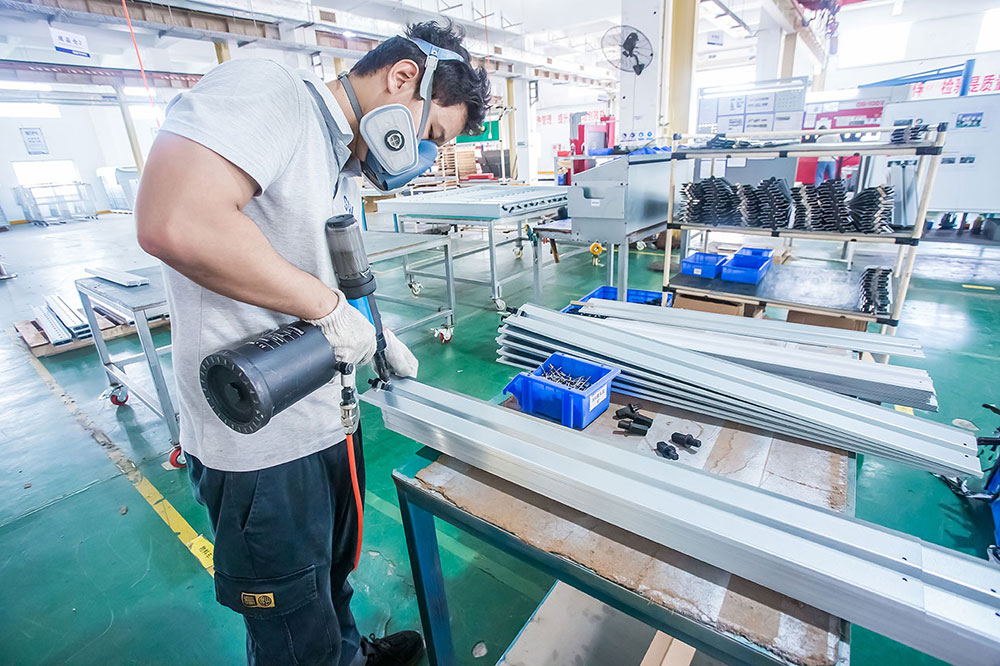
Selecting the right sheet metal processing methods requires evaluating multiple factors:
Material Type: Steel, stainless steel, aluminum, copper, brass, titanium, and specialty alloys each have unique formability, strength, and corrosion resistance.
Thickness and Gauge: Thinner sheets may warp under certain processes; thicker plates require heavier-duty equipment.
Mechanical Requirements: Load-bearing parts demand stronger materials and appropriate joining methods in sheet metal processing.
Surface Requirements: Aesthetic or hygienic applications (medical, food) impose strict finish criteria, influencing process choices.
Geometry Intricacy: Complex shapes with tight corners or deep draws call for precise cutting (e.g., laser) and advanced forming techniques.
Dimensional Accuracy: High-tolerance parts may need CNC-controlled processes and in-process inspection integrated into sheet metal processing.
Feature Integration: Combining multiple functions in one part (e.g., mounting features, ventilation slots) requires careful sequencing of cutting, bending, and joining.
Prototyping vs. Mass Production: Low-volume may favor flexible processes (waterjet, incremental forming), while high-volume justifies tooling investment (stamping dies, roll forming setups).
Tooling Costs: Processes like stamping require die design and maintenance; weigh against per-piece cost savings at scale.
Machine Time and Labor: CNC automation reduces manual labor but involves programming time; balance setup costs with run lengths for cost-effective sheet metal processing.
Equipment Availability: Advanced CNC machines, laser cutters, and specialized forming equipment may have scheduling constraints; plan early.
Material Sourcing: Ensure reliable supply of required alloys; consider domestic vs. overseas procurement impacts.
Logistics and Delivery: Shipping times and customs processes affect total lead time; working with a supplier like Shengwo with ERP-driven logistics improves predictability.
Industry Standards: Automotive, aerospace, medical, and electronics sectors demand certifications (ISO 9001, IATF 16949, ISO 13485) and traceability in sheet metal processing.
Inspection Protocols: In-process and final inspections (CMM, optical measurement) must be integrated into the workflow.
Regulatory Compliance: Material certifications, test reports, and environmental regulations guide process selection and documentation in sheet metal processing.
By evaluating these factors, designers and procurement teams can choose the optimal combination of sheet metal fabrication techniques for each project.
Body Panels and Chassis Components: Stamping and bending for high-volume, tight-tolerance parts.
Exhaust Systems and Heat Shields: Forming and welding of stainless steel for durability.
Interior Trims and Brackets: Laser cutting and finishing for aesthetic appeal.
Structural Frames and Brackets: High-strength alloys processed via precise CNC cutting and forming.
Engine Components and Ducting: Sheet metal processing combined with advanced finishing for corrosion resistance.
Interior Cabin Panels: Lightweight aluminum parts produced via roll forming and CNC bending.
Enclosures and Chassis: Laser-cut ventilation slots, precision bends, and high-quality surface finishes.
Heat Sinks and EMI Shields: Machined fins and formed structures requiring tight dimensional control.
Rack Mount Panels: Standardized dimensions produced via punching and bending.
Equipment Housings: Stainless steel or aluminum enclosures requiring hygienic finishes (electropolish, passivation).
Surgical Instrument Trays: Deep drawing and forming with corrosion-resistant coatings.
Support Structures and Stands: Welded assemblies with precise tolerances for safety and reliability.
Facade Panels and Cladding: Decorative perforated sheets cut via laser, formed into desired profiles, and powder-coated.
HVAC Ducting: Formed and joined sheet metal requiring airtight seals.
Structural Components: Load-bearing brackets and trim elements fabricated via bending, welding, and finishing.
Enclosures for Electrical Equipment: Sheet metal processing with protective coatings for outdoor durability.
Solar Panel Frames and Mounts: Aluminum profiles formed and machined for lightweight strength.
Wind Turbine Components: Large-scale forming and welding for structural parts.
These examples illustrate how diverse sheet metal fabrication techniques combine to meet industry-specific requirements for performance, aesthetics, and cost.
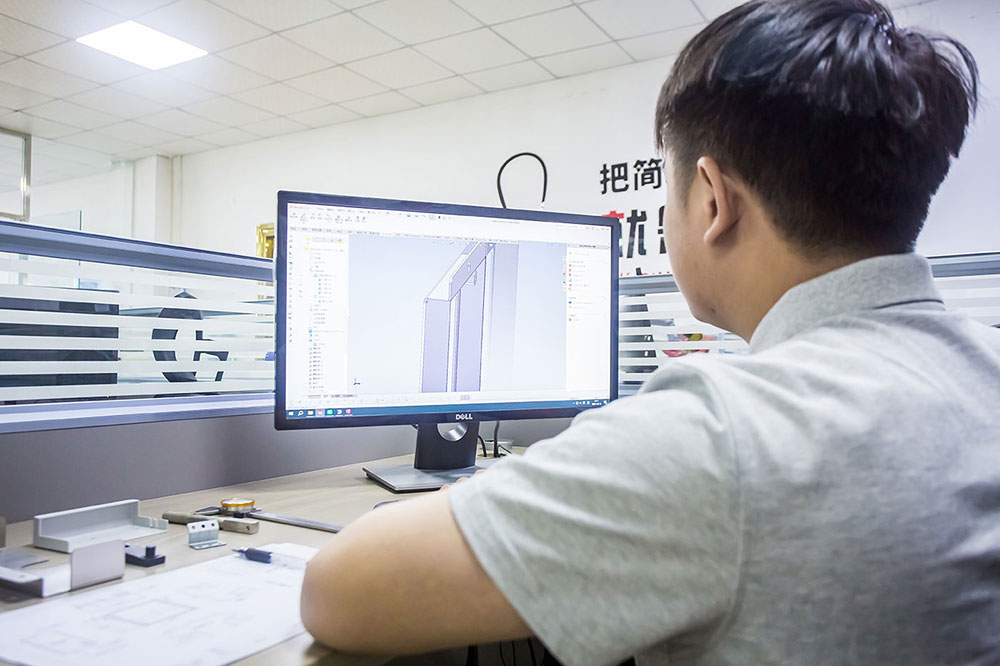
Early collaboration between designers and fabricators optimizes sheet metal processing workflows:
DFM for Sheet Metal Processing
Simplify geometry: avoid unnecessary complexity that increases setups.
Standardize features: use common hole sizes, bend radii, and material thicknesses.
Incorporate datum points and fixture features to speed up alignment.
Engage Shengwo’s DFM optimization system to analyze designs for manufacturability, reducing iterations and cost.
Material Optimization
Select materials that balance performance and machinability (e.g., certain aluminum alloys for ease of forming vs. stainless steel for corrosion resistance).
Plan blank sizes and nesting strategies to minimize waste in sheet metal processing.
Consider composite or coated materials when functionality demands multi-material solutions.
Tolerance Strategy
Apply tight tolerances only where functionally required; loosen non-critical dimensions to reduce machining time.
Specify tolerance zones clearly in CAD and drawings to avoid misinterpretation.
Use statistical process control data from fabricators like Shengwo to set realistic tolerances for consistent quality.
Relevant Standards:
Process Sequencing
Determine optimal order: e.g., cutting → forming → welding → finishing, ensuring minimal handling and distortion.
Plan for interim stress-relief or intermediate inspections for complex parts.
Coordinate with Shengwo to leverage automated workflows and ERP scheduling for efficient throughput.
By embedding these design considerations, teams can harness the full potential of sheet metal fabrication, delivering parts that meet requirements at lower cost and shorter lead times.
Shengwo Machinery stands out as a premier partner for sheet metal processing due to:
Comprehensive One-Stop Services: From detailed design consultation and DFM optimization to cutting, forming, welding, finishing, assembly, and packaging.
Advanced Technology and Patented Systems: Equipped with laser cutting, precision bending, efficient welding equipment, and proprietary multi-stage surface processing machinery, ensuring superior part quality and consistency.
Modern Production Base: A 2,500 m² facility integrating R&D, reliability testing, structural part production, finished product assembly, intelligent logistics, and ERP-driven digital management for efficient operations.
Global Credentials and Certifications: Certified supplier to Fortune 500 companies (e.g., Schneider Electric), recognized as a “National High-tech Enterprise” with ISO systems and patented innovations.
Industry 4.0 and Intelligent Manufacturing: Self-developed DFM optimization system and intelligent production processes shorten development cycles, improve yields, and optimize supply chain efficiency.
Experienced, Collaborative Team: Diverse and inclusive culture fosters efficient teamwork; engineers and technicians work closely with clients to solve design challenges and ensure manufacturability in sheet metal processing.
Quality Assurance and Traceability: Stringent inspection protocols (CMM, optical measurement), material traceability, and ISO-certified quality management guarantee consistent results across batches.
Sustainability Focus: Energy-efficient equipment, intelligent nesting to reduce scrap, recycling programs, and environmental compliance align with global sustainability goals.
Industry Expertise: Serving automotive, medical, communications, cloud computing, consumer electronics, retail, construction, energy, and more—Shengwo understands sector-specific standards and application demands.
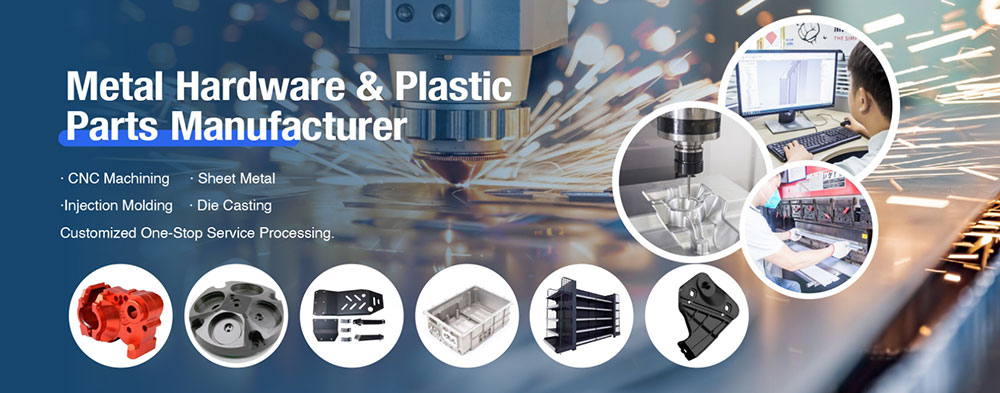
Partnering with Shengwo ensures that your sheet metal fabrication needs are met with cutting-edge technology, expert guidance, and reliable delivery, empowering your products to excel in the market.
Mastering the various sheet metal processing techniques and applications empowers manufacturers to deliver high-quality, cost-effective components across industries. By carefully selecting processes—cutting, forming, joining, and finishing—based on material properties, design complexity, and production volume, teams can optimize performance, reduce waste, and accelerate time to market. Collaborating with an experienced partner like Shengwo Machinery, which offers advanced technology, DFM expertise, ISO-certified quality systems, and integrated services, ensures your sheet metal projects succeed.
Ready to elevate your sheet metal processing? Contact Shengwo today for a free consultation, detailed quote, or virtual factory tour. Let us help you transform your designs into precision-engineered realities!
Q1: What is sheet metal processing and why is it important?
A: Sheet metal processing refers to cutting, forming, joining, and finishing flat metal sheets into final parts. It is important because it enables the creation of durable, precise components used across industries, impacting product performance, aesthetics, and manufacturing efficiency.
Q2: How do I choose the right sheet metal processing technique?
A: Consider material type, thickness, geometry complexity, tolerances, production volume, and finish requirements. Engage with fabricators like Shengwo early for DFM analysis to determine optimal processes (e.g., laser cutting for precision, stamping for high-volume runs).
Q3: What industries benefit most from sheet metal processing?
A: Automotive, aerospace, electronics, medical, construction, and energy industries rely heavily on sheet metal processing for enclosures, structural parts, decorative panels, and functional components.
Q4: How can I ensure quality in sheet metal processing?
A: Define clear specifications and tolerances, request prototypes, implement in-process and final inspections (using CMM or optical systems), and maintain traceability. Choose suppliers with ISO certifications and robust QA systems like Shengwo.
Q5: What are common materials used in sheet metal processing?
A: Stainless steel, carbon steel, aluminum, copper, brass, titanium, and specialty alloys. Material choice depends on strength, weight, corrosion resistance, and application-specific factors.
Q6: How does design for manufacturability (DFM) improve sheet metal processing outcomes?
A: DFM identifies potential manufacturing challenges (e.g., difficult bends, excessive setups) early, enabling design adjustments that reduce cost, shorten lead times, and improve yield. Shengwo’s self-developed DFM system automates and accelerates this process.
Q7: What finishing options exist in sheet metal processing?
A: Powder coating, anodizing, electroplating, galvanizing, electropolishing, passivation, bead blasting, and decorative embossing or perforation. Early planning ensures finishing integrates seamlessly into production workflows.
Q8: How can Shengwo help with complex sheet metal assemblies?
A: Shengwo offers expert engineering support, advanced joining methods (welding, clinching, adhesive bonding), precise fixturing, and automated workflows. Their facility handles cutting, forming, welding, finishing, and assembly under one roof.
Q9: What lead times can I expect for sheet metal processing projects?
A: Depends on complexity and volume. Shengwo’s ERP-driven management and intelligent production processes enable rapid prototyping (often within days) and scalable mass production with predictable scheduling.
Q10: How does Shengwo ensure sustainable sheet metal processing?
A: By using energy-efficient equipment (e.g., fiber lasers), optimizing nesting to reduce scrap, recycling offcuts, and adhering to environmental regulations—Shengwo aligns manufacturing with sustainability goals.